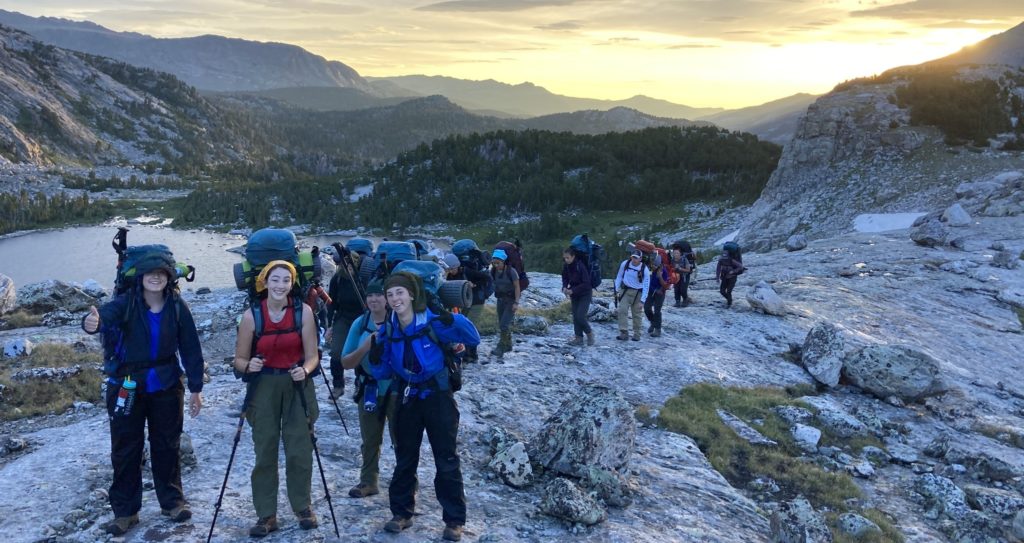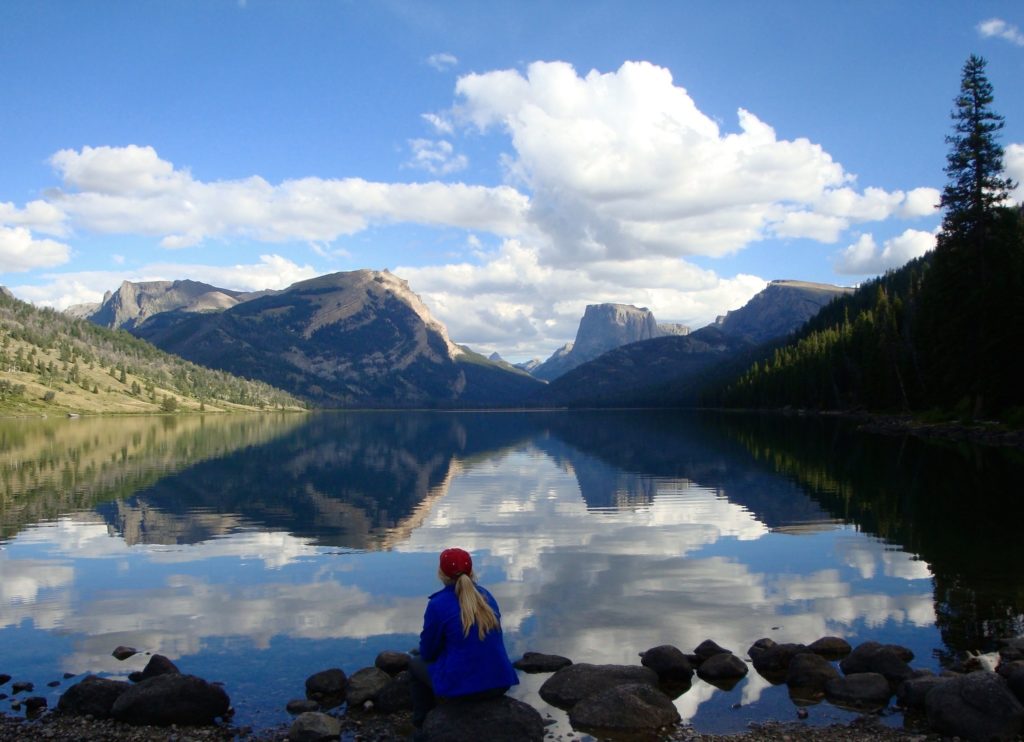“Learning to Read ‘God’s First Book’ Once Again:”
The Incarnational Education of Wyoming Catholic College
by Professor Kyle Washut, President, Wyoming Catholic College
delivered at Notre Dame at the de Nicola Center’s 22nd annual Fall Conference
Wyoming Catholic College, for those who do not know, is fifteen years young. Nestled in a small valley town beside Wyoming’s remote Wind River Mountains, in a state whose population is less than half a million, our college is characterized by an audacious and unique approach to education. We offer an integrated, Great Books liberal-arts degree. During their time with us, all students are required to undertake a three-week backpacking trip, one week of winter camping, a semester of horsemanship, and a week-long excursion every subsequent semester. Our students pledge to observe a fast from key aspects of modern technology, giving up their smart phones and limiting their internet access, and they undertake all of this within an environment of liturgical worship and spiritual formation rooted in the traditions of the Eastern and the Western Rites, breathing with “both lungs,” as Pope St. John Paul II exhorted us to do.
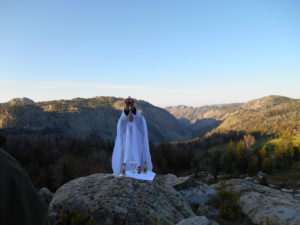 The History of the Idea of “God’s First Book”
The History of the Idea of “God’s First Book”
In one way, what we do at Wyoming Catholic College is profoundly new; it is innovative and responds creatively to the challenges and opportunities of our contemporary situation. But at the same time, our vision for education arises from the ancient metaphor employed by the Church Fathers themselves—the metaphor of God’s First Book. St. Maximos the Confessor, in the 7th century, provides a lucid explanation of the term:
[Nature], is, as it were, a book…Material bodies are like the book’s characters and syllables; they are like the first basic elements nearer to us. … The same divine Logos who wrote these words with wisdom, is alike embodied in them in an ineffable and inexpressible way. He reveals himself completely through these words…he makes himself known to us as Creator, by analogy from the visible, created world.
It’s an incredible claim: God the Word embodies Himself in the letters He writes. And if we don’t immediately think of writing a book as an act of embodiment, it is probably because we are far removed from what “book” meant in the world of early Christianity. For the Church Fathers and medieval monks, the word “book” meant either a scroll or a hand-made codex. To “write a book,” meant to craft each individual letter by hand, personally and painstakingly. Writing was a bodily investment, a pouring out of oneself onto the page.
These books were all necessarily transmitted within a tradition; they were literally handed on, with each edition being the possession of a community, rather than of an individual. Because of the importance and scarcity of the book, it was read aloud and memorized by the members of that community. Thus, the manuscript moved from the realm of the written word to being present—being incarnated within the souls of those who heard it. And those people who received it were then charged with making copies and passing down new versions of the book to those who came after them.
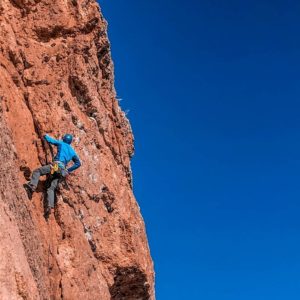 When the Church Fathers speak of the Book of Creation then, they are thinking of a hand-written, multi-layered text—one that is received by a particular community and calls forth a response in that same community. Several hundred years after St. Maximos, Hugh of St. Victor stresses the internal transformation of the reader intended by the Book of Nature: “Wisdom was a book written inwardly, while the works of wisdom were a book written outwardly.”
When the Church Fathers speak of the Book of Creation then, they are thinking of a hand-written, multi-layered text—one that is received by a particular community and calls forth a response in that same community. Several hundred years after St. Maximos, Hugh of St. Victor stresses the internal transformation of the reader intended by the Book of Nature: “Wisdom was a book written inwardly, while the works of wisdom were a book written outwardly.”
The Book of Nature was composed by God in the same way a scribe would write a book, intending the meaning of the book to be written upon the souls of those who heard it. St. Bonaventure notes that this transformation will prompt a response: “[Through] the knowledge of created man was led to know God, to praise, to worship and to love him.” But, St. Bonaventure continues, when humanity fell, there was a disruption between the Book of Nature and the readers who were created to learn from its pages; the inner book of wisdom was erased from our souls:
This book, that is the world, seemed dead and destroyed. Therefore, there was a need for another book through which the previous book had to be enlightened, in order to acknowledge the true meaning of things. This book is nothing but Sacred Scripture, which contains metaphors, images and teachings about the book of the world. In this way, the book of Scripture restores the whole world, and allows the latter again to lead us to know, to praise and to love God.
Hugh of St. Victor notes that there was yet another book composed in response to our fall: the Incarnation itself.
Thereafter, wisdom was written once again outwardly in another way, to make it clearer to see and better to understand. In this way, human eyes were enlightened to read this second writing, having become too weak to read the first one. Thus Wisdom made a second work, which not only showed but also enlightened. Wisdom took the human flesh without losing his divinity, making a book written both outwardly and inwardly; it was written outwardly in humanity and inwardly in divinity, so that it could be read outwardly looking at the visible, and inwardly contemplating the invisible.
The pre-lapsarian intention had been for man to mirror the message of the Book of Nature within his soul, and by partaking in the dialogue between those original two books, to proclaim knowledge, love and praise of God. But that dialogue was silenced by the fall. After the fall, the Word embodied Himself in a new book, His own human body. Now, mankind must read all three books—Nature, Scripture, and Christ—to find the Word of God embodied in all of them, albeit in different ways. The goal of these diverse readings remains the same, however: we read those three books to inscribe within our own soul the Book that is Christ. We are to be divinized through the encounter, so that each of us may become another embodiment of Christ, mirroring the Word found in these three books in our own souls.
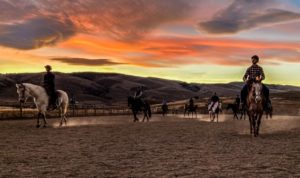 Because of the fall, however, this transformational reading became a laborious work, requiring ascetical training and focused contemplation. St. Anthony of the Desert, one of the earliest to speak of the “Book of Nature” was also one of the earliest to propose wilderness monasticism as the place best suited to learning to read that book once more. The monks of the medieval West imitated the example of the early Dessert Fathers and learned to read the Book of Nature as they loved and passed on the patristic writings about that book. Along with the Bible, these manuscripts were copied, read, and explained. But more importantly, this tradition was transmitted by living what the books contained—what has been called “an experiential mode of transmission” whereby the monks lived the life that the Desert Fathers did: they went into the wilderness, practicing ascetic virtue, contemplating Christ in Scripture and the created world, encountering Him and being transformed by their liturgical and unitive prayer as Christ was sculpted within their souls.
Because of the fall, however, this transformational reading became a laborious work, requiring ascetical training and focused contemplation. St. Anthony of the Desert, one of the earliest to speak of the “Book of Nature” was also one of the earliest to propose wilderness monasticism as the place best suited to learning to read that book once more. The monks of the medieval West imitated the example of the early Dessert Fathers and learned to read the Book of Nature as they loved and passed on the patristic writings about that book. Along with the Bible, these manuscripts were copied, read, and explained. But more importantly, this tradition was transmitted by living what the books contained—what has been called “an experiential mode of transmission” whereby the monks lived the life that the Desert Fathers did: they went into the wilderness, practicing ascetic virtue, contemplating Christ in Scripture and the created world, encountering Him and being transformed by their liturgical and unitive prayer as Christ was sculpted within their souls.
While the monks were attentive to the physical beauties of nature, they emphasized that the Book of Nature was to be read through Scripture and the monastic life, and to be itself transformed by that reading. This book was intended not only to transform the souls of the monks, but was to be transformed by them as well through gardening, the physical construction of the cloister and the church, through works of asceticism, and the like. As Benedict XVI puts it:
[Through the monastery] a wild plot of forest land is rendered fertile—and in the process, the trees of pride are felled, whatever weeds may be growing inside souls are pulled up, and the ground is thereby prepared so that bread for body and soul can flourish.
However, this emphasis on the instrumentality of the Book of Nature ran the risk (at least theoretically) of under-appreciating God’s First Book in-and-of itself. To avoid this error, the great scholastics stressed not only that grace enabled us to better understand the Book of Nature, but that grace builds upon and presupposes that very book. Thus, they understood that the Book of Nature is to be taken seriously in its own right, and that the work of philosophers of nature (especially Aristotle) is to be treated as an essential part of reading this first book, thereby disposing us to receive the knowledge of God’s Word.
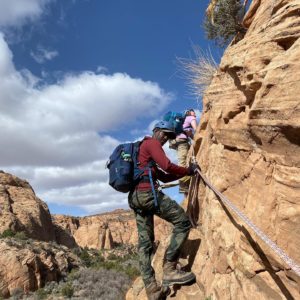 Paradoxically, this emphasis on the mutually supporting role of nature and grace allowed for a kind of isolation of the Book of Nature; some separated the book of nature from the other two books—of Scripture and the Incarnation—thereby separating the way we tend to think of the effect of that first book on our souls. So radical was the transformation, that when the phrase “Book of Nature” is first heard on Galileo’s lips, it takes on such a new meaning that it is often reported that he invented the metaphor.
Paradoxically, this emphasis on the mutually supporting role of nature and grace allowed for a kind of isolation of the Book of Nature; some separated the book of nature from the other two books—of Scripture and the Incarnation—thereby separating the way we tend to think of the effect of that first book on our souls. So radical was the transformation, that when the phrase “Book of Nature” is first heard on Galileo’s lips, it takes on such a new meaning that it is often reported that he invented the metaphor.
The Book of Nature, for the emerging scientific enlightenment, is written in the language of mathematics. As such, reading it is properly the domain of the observational experiential-experimental scientist. It is a private affair, not conducted within a tradition, but undertaken in virtue of the technical skills and native intelligence of the one who is doing the reading. It is a parallel volume to Scripture, and scientists are its interpretive priests; those troublesome clerics are confined to Scripture as their only area of expertise. In fact, the Book of Nature becomes a book read against the Book of Scripture, correcting or even overturning the teaching found in the latter. Nor is this Book of Nature seen primarily as a thing that will transform our souls, but rather (as Francis Bacon will say) as a thing to be overcome by our own technology.
This transformation mirrors the way books themselves came to be understood in the era of the printing press. Increasingly, the written word was seen as a private commercial possession, rather than something owned by a community and belonging to a tradition. Printing allowed for far more accurate transmission of data, and the ability to have multiple volumes checked against one another replaced the priority of a single, authoritative, communal manuscript. Additionally, the printing press facilitated the explosion of both newspapers and “how-to-manuals,” meaning that the printed word was now able to serve the transient, utilitarian, and commercial realms in ways that hand-written books could not. As both book and nature were reconceived, it makes sense that the way Western civilization understood the metaphor of the Book of Nature was radically changed.
The Changing Meaning of “God’s First Book”
In our contemporary setting, we are experiencing yet another transformation in our understanding of the Book of Nature—one that comes with the arrival of the virtual world. Beginning with the invention of the television and accelerating with the advent of the internet and the numerous small devices we all carry about with us, we are witnessing yet another revolution in what it means to be a book; this time, an even more extreme version of the transformation caused by the printing press. Now, the consumption of media is primarily a private activity, far more controlled and curated, and scrupulously shaped to our personal tastes. It is nearly instantaneous and much less rooted to a local community and place. Increasingly and alarmingly, the experience of reading is a commodified one, an activity we undertake as consumers rather than as learners.
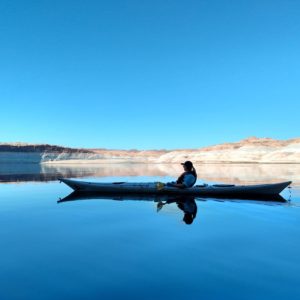 And as our experience of a book changes yet again so too does our experience of the Book of Nature; we find ourselves even more increasingly isolated from its pages. The climate we experience when at home, in the car, or at work; the air we breathe; the clothes we wear; all are increasingly the product of technological artifice. Tendencies that over fifty years ago led Josef Pieper to lament society’s inability to be attentive to nature—to actually see the world around them—have accelerated at an astonishing rate. Our days are filled with what Pieper described as “visual noise,” a bombardment of distractions preventing us from giving our attention to the message of creation.
And as our experience of a book changes yet again so too does our experience of the Book of Nature; we find ourselves even more increasingly isolated from its pages. The climate we experience when at home, in the car, or at work; the air we breathe; the clothes we wear; all are increasingly the product of technological artifice. Tendencies that over fifty years ago led Josef Pieper to lament society’s inability to be attentive to nature—to actually see the world around them—have accelerated at an astonishing rate. Our days are filled with what Pieper described as “visual noise,” a bombardment of distractions preventing us from giving our attention to the message of creation.
In 1954, Walker Percy grew concerned that our experience of nature no longer consisted of a “penetration of the thing itself, from a progressive discovery of depths, patterns, colors, shadows, etc.” but was measured in terms of conformity to preexisting standards created by media advertisements. Almost seventy years later, Instagram has turned our experience of nature into a commodified thing, measured and validated by others’ virtual experience of it. When C.S. Lewis laments readers’ increasing inclination to ignore what a book is trying to say and do for the sake of the emotional or conceptual end they have in mind, he went on note that the same danger exists when it comes to our experiences of nature. Sixty years later, as nature excursions are marketed to contemporary society with an emphasis on adrenaline-fueled highs or self-indulgent aesthetic sentimentality, we see that even the book of nature can be read as if it were little more than “pulp fiction.”
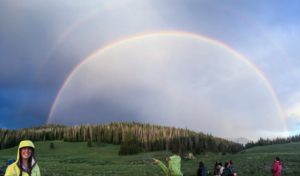 Wyoming Catholic College’s Daunting Task
Wyoming Catholic College’s Daunting Task
What, then, must we do to regain the ability to read the Book of Nature in the 21st Century?
We must recover that monastic mode of transformative reading, in a way that allows for the scholastic perception of the good of nature and the real advances of modern mathematics and science.
That is the daunting task which we have undertaken here at Wyoming Catholic College. Such an approach can only happen when our students enter that experiential mode that characterized the education of the medieval monks. They must immerse themselves not only in the wonders of the backcountry, but in a life of worship and in the study of the great books and ideas that have formed our Christian tradition, all while engaging with the challenging texts of modern mathematics and science. It must be a back-and-forth experience—time immersed in the outdoors, time immersed in study, time immersed in prayer. But these are hardly three distinctive parts; each of the three aspects will interpenetrate the others, each bearing the image of Christ within it, and it is that profound interpenetration within the soul of the student that is the goal of this unique education.
In order to succeed, this experiential mode of education requires two things, above all: community and quiet. This community—actively embodying the education, letting itself be transformed by the books read in the front country, the worship offered on its sacred spaces, and the beauty and challenge of the outdoor experiences—will convey a way of life to its students, and through that example, will become an essential instrument of the education. And this quiet—a technological fast that allows us to re-engage with study, with worship, and with God’s First Book—will shut out the noise that dominates our lives and imaginations. Are there ways to use modern communication technologies well? Surely. But we cannot learn those ways in a world constantly inundated with this endless barrage of noise, preventing us by its din from forming intentional community and engaging with the natural world directly.
 Five Key Marks of Success
Five Key Marks of Success
Fifteen years into this “audacious experiment,” Wyoming Catholic College can now speak to some of the effects. These effects could each be the subject of a distinct paper, but for now, let me enumerate five key marks that we have come to see in our students as a result of the education.
First, we have seen our students grow in habits of receptive attention. Turning off the noise of digital technology, immersing oneself in nature, growing attentive in prayer, and developing intentional habits of good reading create students who can learn to rightly perceive reality anew. This is the habit of attention that C.S Lewis praises as the mark of a literary reader, one who takes his orders from the book and reacts accordingly. This habit of attention is not inert passivity. Rather, it is like a dialogue, a back-and-forth exchange where the book works upon and transforms the reader, and the reader penetrates the book. This back-and-forth allows mutual interpenetration, a communicative relation to nature summed up perfectly by the mutual relationship between a horse and its rider. As one of our field science professors has said:
Students’ engagement with nature is a paradigm for living generally, inasmuch as it is the creature’s role especially to be attentive to the works and will of the Creator. This attitude of receptivity is not passive, but involves concentration bordering on the spiritual.
Second, we see a strong moral component arise from this close reading of the Book of Nature. The monks of old went into the wilderness to practice asceticism, to be transformed by the labors demanded of them there. As the College notes in in its statement on outdoor education:
Direct experience of God’s creation provokes the starting point of the virtues, namely a humility in the face of what is true and good. Our outdoor instructors have found that the same experience serves to nourish this small beginning towards true virtue. Further, because God’s creation is not man’s creation, the dangers and discomforts it imposes are real and unavoidable…Students mature quickly in the knowledge that this is not a game, not a drill, but real life.
Being virtuous is being excellent, and such excellence needs to be real, not imaginary—behavior produced as a carefully calibrated response to reality. One of our graduates, Veronica Clarke, described this moral transformation in a recent article in First Things:
We traversed [mountain] saddles and crossed rivers, bandaged blisters and treated sunburns. We huddled together in the “lightning position”—crouched low and balancing on the balls of our feet, heels touching, arms outstretched—as rain battered our tents and thunder rattled our teeth. The days were hot; the nights were cold and clear as ice. I’d never seen stars so bright….Nature puts you in your place. My muscles ached, and my knuckles and ears burned with sunspots. My inexperience forced me to rely on the kindness and patience of my classmates. I felt humbled and small. I’d also never felt more real.
Third, the communally-shared experience of our education allows for students to be sculpted by the place they inhabit and by the community they experience each day. Truly, the community is an instrument of the education, transforming the souls of its members; rather than being cut off from the world around them, our students are forming friendships, sharing common goods, and being mutually transformed by the place in which they find ourselves and by the people around them. One professor notes:
We trace our materiality to the cosmic creative process and our spirituality to an immortal principle bestowed directly by the Creator. Thus we manifest transcendence even while embedded in the fabric of the world. A balance needs to be struck, and integration maintained, between the physical and spiritual principles – to do this is no small part of human life and endeavor. On the existential side we are unavoidably localized – living, growing, and developing in this region of the universe, on this planet, in this locale and so on. Thus the particularity of sense experience finds a natural complement in the particularity of one’s own immediate environment. It is not nature in the abstract that we want first to encounter, but nature as constituted in Wyoming, in the Wind River country.
This profound rootedness in place and community allows our students to be transformed by the wider tradition that they inherit. It is as members of a community, inheritors of a tradition, that we encounter God’s First Book. As Miss Clarke writes:
The change I underwent at Wyoming Catholic College was slow and subtle, the way water and wind carve out a canyon, the way a child is knitted together over nine months…. Our alma mater makes us anew, unweaving and weaving us back together with the words we read and write, the friendships we make, the virtues we cultivate. Wyoming Catholic taught us to embody and live out the tradition we already, in often hidden ways, shared.
Fourth, an immersive reading of God’s First Book deepens the way in which we come to know. Specifically, it deepens what Maritain (following Aquinas) will call “connatural knowledge.” Aquinas uses the phrase to distinguish the way a theoretical ethicist may know what is just from the way someone who has learned justice from his experiences knows the very same truths. As Maritain puts it:
In this knowledge through connaturality the intellect is at play not alone, but together with affective inclinations and the dispositions of the will, and as guided and shaped by them. It is not rational knowledge, knowledge through the conceptual, logical, and discursive exercise of reason. But it is really and genuinely knowledge, though obscure and perhaps incapable of giving account of itself.
And this mode of knowing was so strong in the Church Fathers and the Medievals, Maritain argues, that they understood the dry, scholastic statements differently as a result.
The natural inclination was so strong in them that their proofs of God could take the form of the most conceptualized and rationalized demonstrations, and be offered as an unrolling of logical necessities, without losing the inner energy of that intuition.
It is this kind of knowledge that gives rise to the experience of wonder that sets the mind afire for philosophy (as Josef Pieper describes it). It is this knowledge that is the mark (according to St. Thomas Aquinas) of the distinctively human mind that the Incarnate Word assumed. This kind of knowledge (Maritain claims) gives rise to that creative act which we call art or poetry. Thus, memorizing lyric poems, rejoicing in their images and sound, attentively reading literature, and the like is (as Lewis has already suggested) a participation in a transformative knowing of the created world. It deepens our students’ philosophy, enlarges their theology, and enlivens their writing.
Lastly, and most importantly, however, re-reading the Book of Nature makes clear not only the grandeur of nature, but the profoundly personal way in which God has gifted it to us. As one of our students wrote when reflecting on her 21-day trip into the wilderness:
One day I walked to the edge of the mountain lake that was created to make me cry….I cried because it was an overabundance specifically meant for me. That valley and those waterfalls had been formed a millennia ago so that one day a 19-year-old girl would sit there and know she was loved and weep. I knew it had been created for me, which meant I was loved beyond the extremes of any human lover…It was the kind of gift a lover gives to overwhelm his beloved with the scope, with the bounty of his love. That is the sole purpose of beauty. Beauty exists to overwhelm us with the love of our Creator through a direct outpouring of his bounty, a bounty that is directed at us with the same single-minded intention as if we were the only person who existed and were eminently worthy of love….My heart understood what my head took weeks of thought and writing to reach. My reaction … pierced the veil between the visible reality and the invisible meaning. When one looks in the face of an abundant, bountiful love, unrecognized and unrequited, there is no reaction more appropriate than weeping. It is a weeping that encompasses both joy and sorrow and surpasses them both. It is a personal response to a personal love.
This profound experience of gift, of a hand-crafted message, delivered to you personally, here and now, as a member of a particular community—a message delivered to transform you anew into an image of Christ and make you know Him in the depth of your being, and then to explode out with a song of praise in response—this is what Christians mean by “reading God’s First Book.” And it is this reading that we are undertaking anew at Wyoming Catholic College, here in the 21st century.
